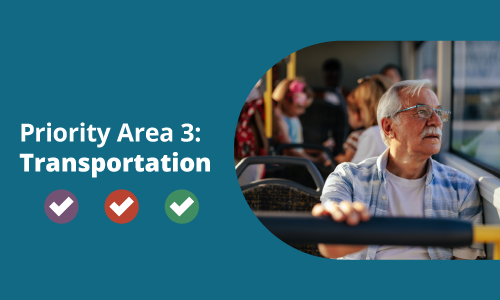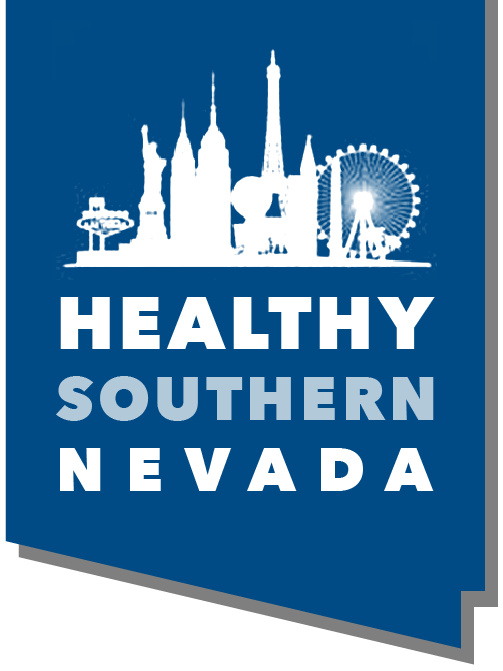Reliable access to transportation can help increase employment rates, access to healthy foods, access to health care providers and facilities, and access to parks and recreation for a healthy lifestyle. The CHA identified the high cost of transportation, lack of access to transportation, and insufficient transportation funding as key areas to address.

Goal 1: Increase awareness of transportation options that facilitate access to basic needs and services
Objective 1.1: By December 2024, explore the expansion of Three Square's Golden Groceries program to include low-income populations of all ages.
Action Step: Confirm interest with service providers
Action Step: Identify new resources for expansion
Action Step: Pilot test service
Objective 1.2: By December 2024, promote awareness of existing programs such as Silver STAR and Silver Rider to eligible riders, and promote the expansion of on-demand transportation services for low-income communities lacking access to essential services.
Action Step: Confirm interest with service provider
Action Step: Identify new resources for expansion
Action step: Develop potential service routes
Action Step: Co-develop transportation service pilot
Goal 2: Increase availability of general transportation resources available to the community
Objective 2.1: By December 2023, help identify funding opportunities to consider new transit fare policies for improved affordability and access.
Action Step: Identify interested community partners
Action Step: Develop task force
Action Step: Co-develop and submit funding application
Action Step: Expand access to existing reduced transit fare programs
Objective 2.2: By December 2025, increase the number of available transportation resources available to the community.
Action Step: Review existing transportation survey data and identify gaps
Action Step: Rank needs by importance and changeability
Action Step: Present results to transportation partners
Action Step: Align initiatives with available funding
Action Step: Coordinate the provision of reduced fares to more individuals in need
What the data say:
- For the 2016-2020 period, 8.0% of Clark County households do not have a vehicle
- Clark County has 39 bus routes. 13 routes operate 24 hours a day, 7 days a week
- A resident regular fare 24-hour pass costs $5
The Mean Travel Time to Work is less for residents of Clark County than the rest of the United States. However, the number of minutes is increasing.



